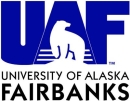The Land Use and Environmental Change oral history project on Project Jukebox contains interviews with elders in the community of Selawik, Alaska. Elders discuss the history of land use and environmental conditions on the Selawik Refuge in the early to mid-20th century, including information on traditional family settlements, muskrat hunting and trading, other key subsistence activities, and resource distribution and abundance.
The Selawik National Wildlife Refuge was established in 1980, and encompasses more than two million acres of land in the Selawik River valley and Kobuk River delta in northwest Alaska, an area that has a long history of occupation and use by Alaska Native people. Understanding the natural environment of the Refuge over a long time scale is important for gaining insight into long-term ecological change, and understanding changes in land use over this period provides information on the Refuge’s cultural resources, subsistence practices, and long-standing human relationships with the landscape. First-hand knowledge held by Iñupiaq elders is a vitally important source of information for understanding theses historic environmental and land use issues.
View the project website where you may read or listen to interviews at https://jukebox.uaf.edu/selawik


